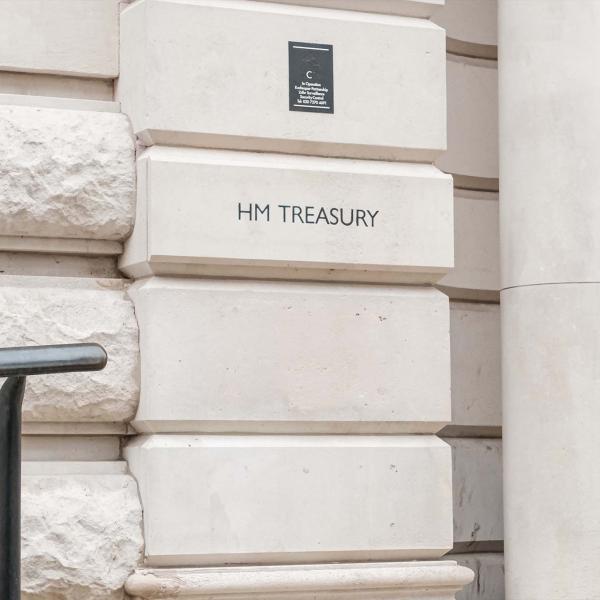The debate on Scottish independence has been enlivened today by the publication of two separate reports on the outlook for the public finances of an independent Scotland, one from HM Treasury and one from the Scottish Government. These reports appear to come to quite different conclusions about the likely strength of Scotland’s public finances as an independent country compared to continuing as part of the UK.
The publication from the Scottish Government presents a much more optimistic medium term picture for Scotland than our own previous analysis and that of some other organisations. In 2016–17 the Scottish Government is projecting that total spending in Scotland would exceed revenues by (that is, they would have a net fiscal deficit of) 2.8% of national income – slightly greater than the 2.4% deficit currently forecast by the OBR for the UK as a whole in that year. This is significantly more optimistic than the 5.2% deficit forecast for Scotland that we estimated in our analysispublished in early March. It is also more optimistic than the medium-term forecast for Scottish fiscal balance underlying the Treasury’s publication today.
What explains this difference?
There is broad agreement over two key facts. Public spending per capita is significantly higher in Scotland than in the UK as a whole. At the same time onshore tax revenues per capita are similar – in fact a little lower in Scotland.
The main point of disagreement is the different forecasts for revenues from North Sea oil and gas used. Our figures and the Treasury’s figures are based on the Office for Budget Responsibility’s projections. The Scottish Government report instead uses their own – higher – forecasts for North Sea revenues. Their figures assume that Scotland will receive £6.9 billion (or 4.1% of Scottish GDP) in tax revenues from offshore oil and gas production in 2016–17, rather than the £2.9 billion (1.7% of GDP) forecast by the OBR.
The figure below shows a comparison of the estimated net fiscal balance for Scotland and the UK under the Scottish Government’s and the OBR’s projections for North Sea revenues. (The dark bars are the figures contained in the Scottish Government’s report today: somewhat oddly perhaps, the Scottish Government report incorporated the higher oil and gas revenues in their projections for Scotland but not in the comparator figures for the UK fiscal position.)
Notes: The first set of bars indicate the figures contained in Scottish Government (2014), Outlook for Scotland’s Public Finances and the Opportunities for Independence. The names assigned to the three Scottish scenarios also correspond to those used in that publication.
Sources: Authors’ calculations based on: Scottish Government (2014), Oil and Gas Analytical Bulletin: May 2014; Scottish Government (2014), Outlook for Scotland’s Public Finances and the Opportunities for Independence; Office for Budget Responsibility (2014), Economic and Fiscal Outlook: March 2014.
It is difficult to know exactly what offshore oil and gas revenues will be in future. There is genuine uncertainty about exactly how much will be raised from this source over the coming years, as is demonstrated by a comparison of recent official forecasts and subsequent outturns. The chart, therefore, serves to highlight how much more sensitive Scotland’s fiscal position would be to fluctuations in this source of revenues than is the UK as a whole. This would pose its own challenges to the management of the public finances in an independent Scotland – as we and others have discussed elsewhere.
Does this mean that, if oil revenues come in as forecast by the Scottish Government up to 2016–17, the public finances of an independent Scotland would be in a sustainable position beyond that?
Unfortunately the longer-run picture is not that simple. There are two important fiscal challenges that an independent Scotland would have to face in the longer run. First, an ageing population, which would tend to increase public spending (particularly on health care and pensions) and reduce some tax revenues. Second, as reserves of oil and gas are depleted over the long run, offshore revenues are likely to decline. These pressures will tend to increase public spending and reduce revenues, and therefore increase borrowing and debt, in the absence of other offsetting policies.
In other words, even if the Scottish public finances were to look favourable in 2016–17, the long run picture may look very different. These challenges face not only Scotland but the UK as a whole. However, our previous work suggests that the issues (particularly the decline in revenues from offshore production) would be more acute for Scotland. For example, one relatively optimistic scenario considered in our analysis published last November (which implied that Scotland would achieve a net fiscal surplus in 2016–17) suggested that – once demographic pressures and the decline of North Sea oil revenues are factored in – an independent Scotland could require a fiscal tightening around 1% of GDP larger than required by the UK to get debt to a similarly “sustainable” position. The HM Treasury analysis published today sets out a similar type of analysis of the long run position for Scotland’s public finances to that which we conducted last November, with similar conclusions.
So why does the Scottish government’s analysis today suggest a different picture?
Today’s analysis from the Scottish Government illustrates how the long run outlook for Scotland’s debt might look more favourable were productivity growth, employment and population growth to be higher than has been the case for the UK in recent times. The scenarios they illustrate suggest that debt could be on a decreasing, rather than increasing, path every year from 2018–19 onwards. There are two concerns with this analysis.
First, whilst it may turn out to be the case that the Scottish economy does a great deal better after independence than it would as part of the UK, planning on this as a central assumption seems less than cautious.
Second, this analysis makes the important assumption that real public service spending per person does not grow faster if productivity growth turns out to be higher. This implies that public spending as a share of national income declines over time – something that has not been borne out in the UK over the long term. If instead public service spending per person were assumed to grow in line with productivity growth (the assumption made in our analysis and by the OBR when modelling the long run outlook for the UK public finances), the higher productivity growth, employment and population growth simulated by the Scottish Government would have little beneficial impact on the long run Scottish public finance position. The quantity and quality of public services provided would, however, be higher.
This analysis forms part of 'The Future of the UK and Scotland', a research programme funded by the Economic and Social Research Council (ESRC). It brings the best of UK social science to the debate about Scotland’s constitutional future and its implications for the rest of the UK. For further information please visit theprogramme website.






